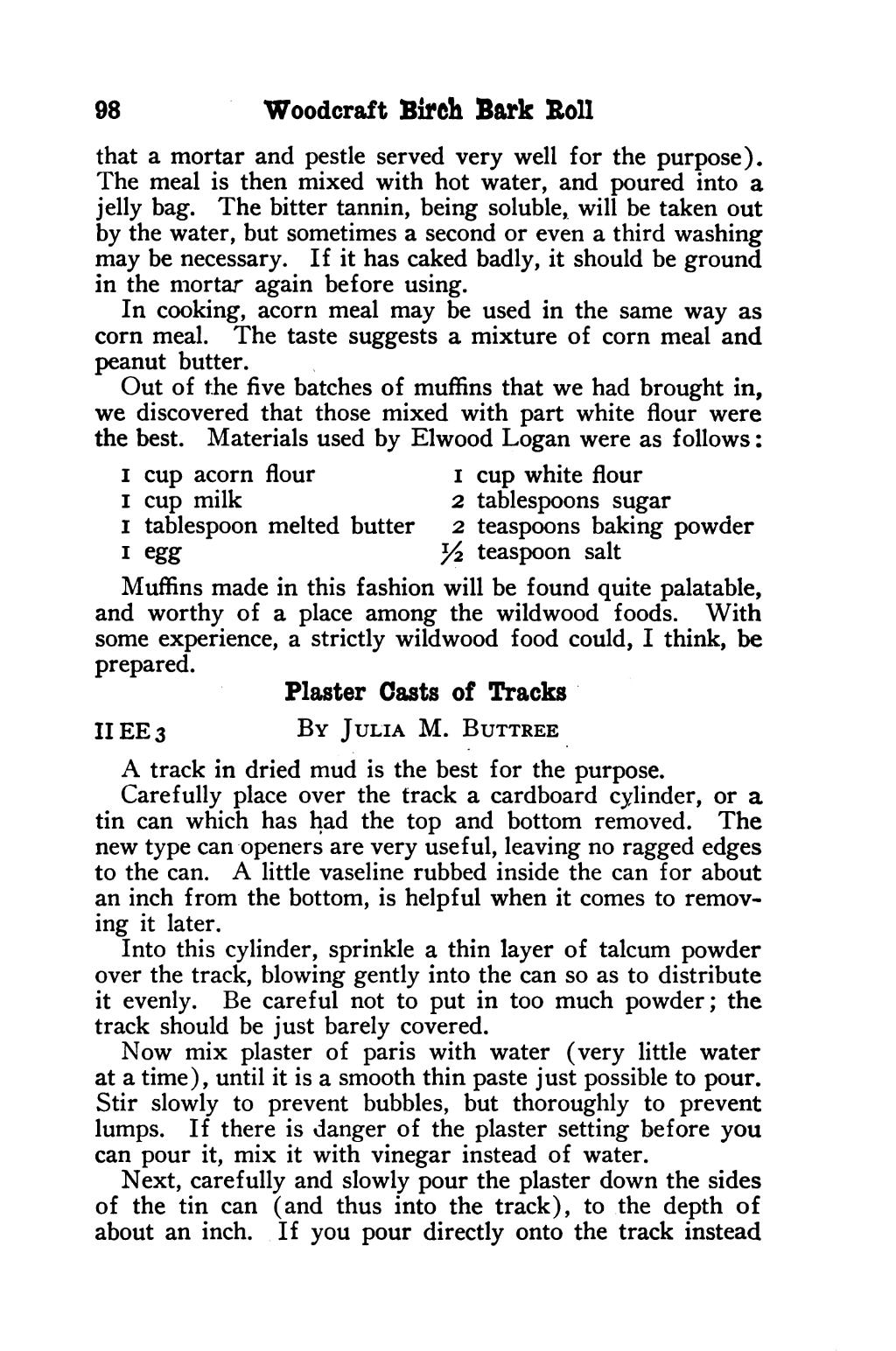98 - Woodcraft Birch Bark Roll that a mortar and pestle served very well for the purpose). The meal is then mixed with hot water, and poured into a jelly bag. The bitter tannin, being soluble, will be taken out by the water, but sometimes a second or even a third washing may be necessary. If it has caked badly, it should be ground in the mortar again before using. In cooking, acorn meal may be used in the same way as corn meal. The taste suggests a mixture of corn meal and peanut butter. Out of the five batches of muffins that we had brought in, we discovered that those mixed with part white flour were the best. Materials used by Elwood Logan were as follows: I cup acorn flour I cup white flour I cup milk 2 tablespoons sugar 1 tablespoon melted butter 2 teaspoons baking powder I egg YZ teaspoon salt Muffins made in this fashion will be found quite palatable, and worthy of a place among the wildwood foods. With some experience, a strictly wildwood food could, I think, be prepared. Plaster Casts of Tracks II EE 3 By Jutia M. BUTTREE A track in dried mud is the best for the purpose. Carefully place over the track a cardboard cylinder, or a tin can which has had the top and bottom removed. The new type can openers are very useful, leaving no ragged edges to the can. A little vaseline rubbed inside the can for about an inch from the bottom, is helpful when it comes to remov- ing it later. Into this cylinder, sprinkle a thin layer of talcum powder over the track, blowing gently into the can so as to distribute it evenly. Be careful not to put in too much powder; the track should be just barely covered. Now mix plaster of paris with water (very little water at a time ), until it is a smooth thin paste just possible to pour. Stir slowly to prevent bubbles, but thoroughly to prevent lumps. If there is danger of the plaster setting before you can pour it, mix it with vinegar instead of water. Next, carefully and slowly pour the plaster down the sides of the tin can (and thus into the track), to the depth of about an inch. If you pour directly onto the track instead
Stránka:roll 1931.djvu/114
Z thewoodcraft.org
Tato stránka nebyla zkontrolována
